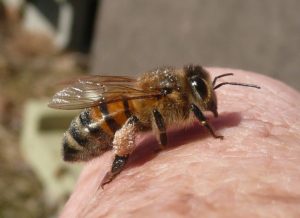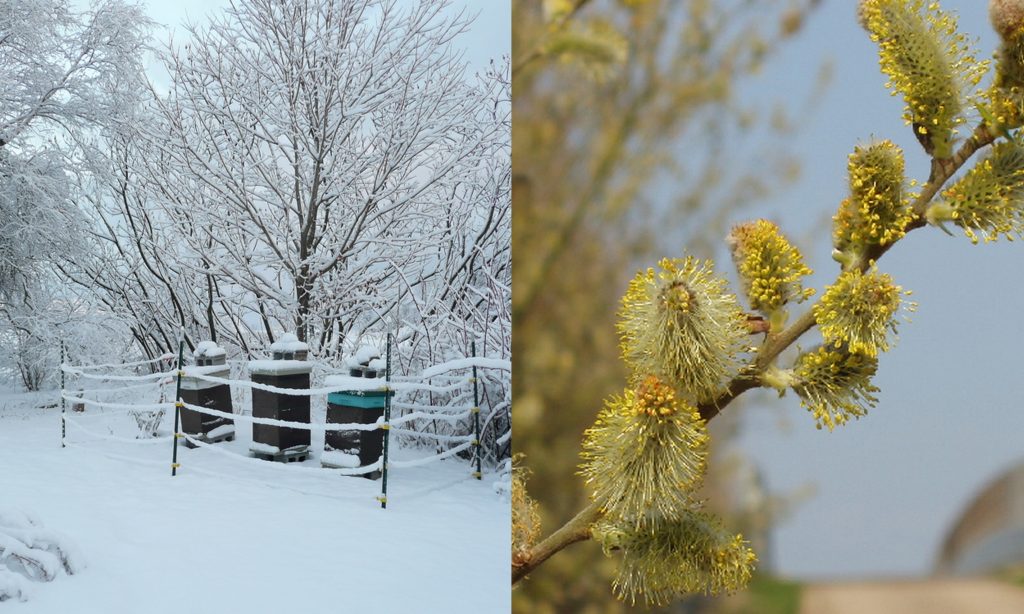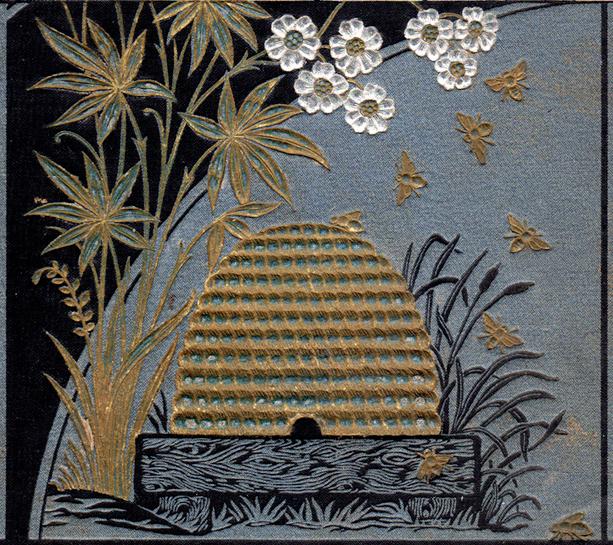Live from the Hive: April 2013
“Pollen!” By Annie Watson
 The bees were busy in the warm weather yesterday. The workers came back to the hive looking like they’d spent some time in a bakery — all dusted with very light tan pollen. It could be red maple, or maybe elm — I’m not sure. Red maples bloom around this time. Now, on warm days, the bees can feed their young, and the more food that’s available the more numerous and stronger the colony will be come summer. Nectar and pollen producing plants promote brood rearing and wax production — both important to the “spring buildup” of the colony.
The bees were busy in the warm weather yesterday. The workers came back to the hive looking like they’d spent some time in a bakery — all dusted with very light tan pollen. It could be red maple, or maybe elm — I’m not sure. Red maples bloom around this time. Now, on warm days, the bees can feed their young, and the more food that’s available the more numerous and stronger the colony will be come summer. Nectar and pollen producing plants promote brood rearing and wax production — both important to the “spring buildup” of the colony.
We love these warm days when the sun is shining and the bees are overjoyed to be out after the long winter cooped up in the hive. It’s so live affirming to see them bringing food back to the hive. I was blessed by one bee visiting my hand before she delivered her load. Note the blob of pollen basket on her back leg.
For more about pollen plants, check out this slide show from the Northeast Kansas Beekeepers’ Association.

